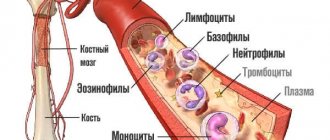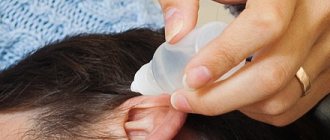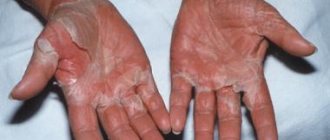Description
Deafness is the complete loss of hearing, the lack of perception of external sounds and speech. Hearing loss can develop in one ear or in both ears. The disease most often affects people aged 50 to 70 years. Statistics show that 1/6 of this age category suffers from deafness in the world. Pathology studies have revealed that every hundredth person is a carrier of the deafness gene. The disease interferes with normal life: it does not allow you to find a decent job, it causes nervous disorders. Hearing loss affects social adaptation in society.
Types of deafness
There are two types of deafness:
- congenital;
- acquired.
The occurrence of congenital deafness is facilitated by: improper development of the hearing organ in the fetus, hereditary factors, and hearing damage during childbirth. Illnesses during pregnancy can also affect the development of pathology in the unborn child.
The consequences of infectious diseases can cause acquired deafness. The disease can occur after taking antibiotics, due to physical injury, or environmental exposure. Hearing loss may become sudden or develop gradually. Acute deafness may appear within a few hours. The gradual development of the disease continues for several years.
Hearing loss is divided into three categories based on type:
- conductive;
- neurosensory (sensorineural);
- mixed.
Conductive deafness is a disorder in the transmission of sounds from the outer to the inner ear. The progressive conductive stage can lead to complete hearing loss. The cause is: wax plugs, ear injuries, otitis media, ear pathologies.
Damage to the auditory nerve or inner ear leads to the development of sensory deafness. The causes of cochlear disease are infectious and colds, stress, taking antibiotics, and mechanical injuries.
Mixed deafness is characterized by severe hearing loss. Includes symptoms of conductive and sensorineural deafness. The severity is determined by diagnostics - audiometry.
Deafness in adults
Many people experience hearing problems. Most patients suffer from hearing loss. Gradual hearing loss can continue for years. Medical examination - audiometry allows you to determine the severity of the disease.
Level 1 deafness is considered a mild stage. The patient can hear clearly at a distance of up to six meters. The second degree occurs due to progression of the disease. The patient receives sound perception up to four meters. Level 3 deafness is considered severe. In this case, the patient can make out sounds up to two meters. A hearing aid helps at this stage. A very severe degree of hearing damage manifests itself at stage 4. Speech communication is almost not perceived. In the last stage, complete deafness is observed.
People with diabetes have twice the risk of developing deafness. The disease in this case cannot be treated. Diabetes usually causes sensorineural hearing loss. Prevention of the disease is constant observation by a doctor and monitoring of sugar levels.
Deafness can be caused by complications from the flu. Otitis that occurs during the course of the disease develops into an acute form. If the disease is not treated, it can develop into a chronic form. Any pain in the ear cavity should be a serious reason for immediately visiting a doctor.
During pregnancy, women often experience pressure changes and excess weight. Pregnant girls often experience runny nose and ear congestion. All these factors can lead to temporary deafness during pregnancy.
Deafness in children
The development of the disease in children causes serious consequences. Deafness from birth can make a child mute. The disease can develop in newborns or appear in infancy. Hearing loss often occurs in one ear. Modern medicine makes it possible to test a baby’s hearing immediately after birth. Diagnostics is carried out by a neonatologist.
The progression of hearing loss or deafness can be triggered by childhood diseases: rubella, measles, meningitis. Children who have lost their hearing become mute, learn sign language, and learn to read lips.
Which doctor should I contact if I am deaf?
Modern methods of treating the disease include various drugs that help restore hearing loss, depending on the stage of development of the disease. Assistive devices for deafness contribute to improved perception of external sounds and speech. If the first signs of the development of the disease are detected, it is necessary to contact an ENT (otolaryngologist) to identify the disease and further treatment. At the first signs of hearing loss in children, contact a pediatrician or ENT doctor. After the visit, the doctor writes a referral to an audiologist.
Causes
The main causes of acquired hearing loss are:
- age;
- loud noise;
- hearing diseases;
- injuries.
Congenital hearing loss can be caused by:
- when passing genes from one of the parents;
- the impact of negative factors on the mother’s body and fetus during gestation.
With age, all of a person's senses weaken: vision, smell, hearing and touch. By the age of 50, up to 20% of people have hearing loss, by the age of 70 - over 30%.
Modern man is surrounded by a large number of loud sounds: music in the headphones of the player, at large concerts and discos, the noise of production equipment, and transport. A sharp, loud sound near a person can deprive one of the ability to hear for a long time.
The cause of hearing impairment is often cerumen plug - an accumulation of earwax, sebaceous and secretory gland secretions in the external auditory canal. Earwax is a protective agent that protects the ear from harmful microorganisms, hypothermia, and dead skin particles. If you clean your ear with a cotton swab, pushing the wax deep into the canal, it accumulates and completely blocks the auditory opening, reducing hearing.
Scars on the eardrum that form after suffering from otitis media impair its elasticity: the membrane transmits air vibrations with less efficiency, which also affects the quality of hearing.
Symptoms
Photo: mgpravo.com
There are many factors that cause decreased or complete hearing loss. As practice shows, hearing loss in very rare cases is asymptomatic. Depending on the root cause that caused deafness, the symptoms of the disease vary significantly. However, the main and characteristic symptom of deafness is decreased hearing acuity.
Common symptoms of deafness
As practice shows, the most common signs of deafness are:
- a subjective sensation that manifests itself as ringing, humming, squeaking or hissing in the ears;
- deterioration in the perception of high-frequency sounds;
- difficulty perceiving speech in a noisy, crowded environment;
- low hearing permeability or its complete absence;
- feeling of your own body moving, lack of coordination;
- a feeling that surrounding objects are rotating and moving.
Sensorineural hearing loss
Sensorineural hearing loss is a type of illness and can be either unilateral or bilateral. This disease affects the population from 20 to 36 years old, mainly men. Among patients with sensorineural hearing loss, the first place is occupied by complaints of unilateral or bilateral hearing loss, which in most cases is accompanied by subjective noise in the damaged ear, ringing and an unpleasant feeling of fullness. Some patients complain of nausea and vomiting.
Characteristic signs of sensorineural hearing loss are also disturbances in the vestibular system, namely: dizziness and a feeling of unstable balance that accompanies the patient in a standing position and when walking. The combination of sensorineural hearing loss with vestibular disorders leads to the formation of central or peripheral cochleovestibular syndrome in the patient.
Common symptoms of sensorineural hearing loss include:
- distortion of sounds;
- difficulty perceiving sounds in noisy rooms;
- deafness and noise in the ear, which periodically intensifies.
The latter is characterized by a high frequency and is described by patients as a squeak, whistle or unpleasant ringing.
Conductive hearing loss
This type of hearing loss, like the previous one, affects one or two ears equally. Symptoms of conductive deafness vary widely and depend on the underlying cause of the disease. The main symptom is decreased hearing acuity. It can occur suddenly, sharply (as a result of barotrauma due to a pressure difference between the middle and outer ear) or worsen gradually (as a result of sluggish inflammatory processes - otitis).
Other specific symptoms of conductive hearing loss are associated with primary diseases. These include:
- ear pain due to acute external otitis media;
- ear bleeding due to perforation of the eardrum;
- increased body temperature or damaged organ due to otitis media.
Persistent hearing impairment can be observed with otosclerosis, which appears as a result of otitis media. In this case, the acuity of perception decreases sharply, and then steadily worsens over several years. Experts point to some specific signs of increasing deafness that are revealed during examination, namely:
- when conducting the Weber test, when the audibility of sound is determined in the patient from the side of the damaged ear;
- during the Rinne test, when bone conduction of sound dominates over air conduction, whereas normally the reverse process occurs.
Senile deafness
Senile deafness or presbycusis is the most common type of disease and is explained by the development of involutionary processes in the aging body. This type of deafness is acquired in nature and begins to develop gradually already at a fairly mature age - from approximately 40-45 years. At the beginning of the process, a violation of the tonal perception of high-frequency sound is observed, however, it is insignificant.
At the next stage, people begin to complain about the deterioration in the intelligibility of women's and children's speech, and later about the difficulty of perceiving intelligible speech, which is reproduced by several persons at the same time, and the sound component does not suffer, but is at a good level. Many patients complain of tinnitus, which, however, is not constant, but appears periodically and does not affect the general condition of the person. In some cases, older people may experience short-term dizziness, which usually occurs with sudden movements.
Senile deafness, the symptoms of which are described above, usually progresses rapidly. This is due to age-related changes and due to concomitant diseases.
Childhood deafness
Another type of disease is childhood deafness. Experts distinguish three types of hearing loss in children:
- sensorineural (sensorineural) hearing loss, which develops as a result of damage to the sound perception apparatus of the inner ear;
- conductive hearing loss, when the sound conduction apparatus of the middle and outer ear is affected;
- mixed hearing loss, when there is damage to the apparatus of sound perception and sound conduction.
As a rule, hearing impairment in children is noticed by parents or family members who are in close contact with their children. They are the first to notice how hearing deterioration begins. Moreover, hearing loss can be congenital or acquired. The first makes up less than 1% of the overall morbidity structure.
There are primary warning signs that indicate hearing impairment in children. These include:
- lack of reaction in a child under 4 months of age to loud sounds;
- absence of pre-speech vocalizations in a child by 4-6 months;
- inability of a 7-9 month old child to determine the source of sound;
- lack of vocabulary in a child by 1-2 years.
In older children, hearing impairment is much easier to recognize. Children suffering from hearing loss, as a rule, do not respond to their name or other shouts, do not respond to spoken or whispered speech spoken behind them, and do not distinguish sounds coming from the environment. They often ask the same thing several times, as if clarifying something, talk loudly and, when talking, look at the lips of the interlocutor, reading the spoken words from them.
Children suffering from deafness experience speech underdevelopment, which is characterized by impaired pronunciation of sounds. They are characterized by an extremely limited vocabulary; they have difficulty distinguishing the pronunciation of the interlocutor’s words. In some cases, there is a violation of the lexical and grammatical structure of speech, a distortion of the sound-syllabic form of words. Therefore, deaf and hard of hearing children develop dysgraphia, a writing disorder, and dyslexia, a reading disorder.
As practice shows, some diseases can provoke the development of hearing loss and lead to complete deafness. You should pay attention to the child’s condition if he exhibits one or more characteristic signs:
- disorders of the vestibular system - dizziness, imbalance when walking;
- Constantly or periodically occurring noise in the ears in the form of ringing, squeaking, whistling.
If hearing loss is suspected and to make a diagnosis, an otolaryngologist will prescribe screening.
The impact of hearing loss on a patient's life
People who have lost the ability to hear have the opportunity to appreciate the additional inconveniences associated with the disease:
- A limited circle of communication appears. In children, development is inhibited and a delay in mastering spoken language is noticed. The negative functional impact is partially smoothed out, since the patient is given the opportunity to write and communicate in sign language.
- People with disabilities are more vulnerable. The problem has a social and emotional impact. If the pathology appears in old age, a feeling of isolation and hopelessness develops.
- Hearing problems among the population, according to WHO estimates, require annual investments in hearing aids and training. The economic side of the issue sharply limits the opportunities of people with the disease to have the right to receive a decent education and a job that corresponds to knowledge and opportunities.
Treatment
Photo: clinic-complex.ru
Different types of hearing loss and deafness require a different approach to the choice of therapeutic therapy. However, there are general principles of treatment that specialists adhere to. As a rule, treatment of deafness and hearing loss includes a whole range of measures aimed at eliminating the root cause of the disease, restoring the structures of the damaged ear, improving blood circulation in the structures of the auditory analyzer, as well as detoxification, if necessary. Experts highlight modern methods of treating deafness, which have several main areas:
- drug therapy;
- physiotherapeutic methods;
- auditory exercises;
- surgery
- treatment with folk remedies.
Conductive hearing loss
This type of disease, especially its first stage, is relatively simple and favorable from the point of view of treatment and restoration of hearing. The optimal treatment method for conductive hearing loss is surgery, which results in restoration of the structures of the outer or middle ear and improvement of sound perception to previous values. Modern surgery offers a wide range of different operations, the implementation of which can restore lost hearing in complete conductive deafness. The most common operations for deafness are:
- myringoplasty;
- tympanoplasty;
- cochlear implantation;
- prosthetics of auditory ossicles.
In case of barotrauma, hearing restoration and pressure normalization are carried out using Politzer blowing. Experts also use a certain scheme on how to cure deafness after otitis media. Drug therapy for the disease itself is carried out, consisting of antibiotics, NSAIDs, and restorative drugs. To improve hearing, physiotherapeutic procedures are prescribed: laser puncture, acupuncture, supravascular laser irradiation of blood, etc.
Sensorineural hearing loss
This type of disease is much more difficult to treat, since it can occur in both acute and chronic forms and has a different nature. Depending on this, experts note four types of sensorineural hearing loss. This:
- viral hearing loss, which develops as a result of viral infections;
- vascular hearing loss, which occurs due to impaired blood circulation in the vessels of the brain and skull;
- toxic hearing loss, which can develop as a result of poisoning with toxic toxic substances;
- traumatic hearing loss resulting from traumatic brain injuries.
Depending on the type of hearing loss and the underlying factor, a method or combination of treatment methods is selected. As a rule, it becomes possible to cure sensorineural deafness only in a hospital setting. The treatment process consists of three stages:
- Stage 1 – emergency treatment, which is carried out within 4-5 days;
- Stage 2 – planned treatment, the duration of which is 1.5-2 weeks;
- Stage 3 – outpatient treatment, which lasts 1-3 months.
This treatment regimen has shown to be effective, and if the patient is diagnosed with congenital deafness, treatment in this case helps to partially or completely restore lost hearing.
For those wondering whether deafness can be cured, you should contact a professional. Treatment of sensorineural hearing loss and deafness is carried out using certain types of drugs. These include:
Nootropic drugs that improve cerebral circulation restore blood circulation in the vessels of the brain. These include Vinpocetine, Nootropil, Glycine, Cerebrolysin, Ginko Biloba.
B vitamins (Thiamin - B1, Cyanocobalamin - B12, Pyridoxine -B6), which are part of some drugs, help restore nervous tissue, which has a positive effect on hearing restoration. Among these drugs are Milgamma and Benfotiamine.
In addition to drug therapy, there are non-drug methods for treating deafness. These include physiotherapeutic procedures, which are carried out in a course, and are prescribed simultaneously with taking medications. Another method of eliminating deafness and hearing loss is a set of specially designed auditory exercises. Treatment of deafness and hearing loss with auditory exercises is an effective method of increasing sound perception, improving the function of the sound-conducting apparatus, as well as a method of partially or completely restoring lost hearing.
One of the auxiliary methods of therapy is the treatment of deafness with folk remedies. There are hundreds and thousands of recipes that can eliminate the disease and restore hearing. The treatment of deafness with propolis, or rather its 10% alcohol tincture mixed with olive oil, is considered quite effective. A positive result can be noticed after completing the course, which lasts 15-20 days.
If deafness is caused by neuritis, a suitable method is dry heat treatment, which has shown excellent results. To do this, pour heated salt or sand into dry and clean canvas bags, tie them tightly, and apply them to the sore ear. It is not recommended to use this method if an inflammatory process has begun in the ear. Many healers recommend treatment with the ASD-2 fraction, otherwise called the Dorogov fraction. According to patients, the results from taking the drug are felt already 3-5 days after the start of the course.
Prevention of deafness and hearing loss
The most important preventive measure to prevent deafness is regular examinations carried out en masse in enterprises, organizations and child care institutions. These surveys are mandatory for all categories of the population, especially those who are at high risk. Prevention of deafness and hearing loss in children is especially important, since this disease causes retardation in intellectual development and delayed speech formation.
Physiology of hearing
The hearing organ consists of sound-conducting and sound-receiving parts. Each of its components in the process of evolution is adapted to best perform its tasks. For example, the shape of the human auricle makes it possible to better capture sounds, and the ear canal improves the quality of sound transmission.
The structure of the auditory analyzer can be distinguished:
- External ear (pinna, external auditory canal);
- Middle ear (tympanic membrane, auditory ossicles, tympanic cavity);
- Inner ear (cochlea, semicircular canals, organ of Corti);
- Receptors;
- Conducting pathways;
- Cortical region in the brain.
The sounds we hear are mechanical vibrations of air space. They cause the eardrum in the inner ear to vibrate, which resonates at its own frequency. Further transmission of vibrations is carried out with the help of the auditory ossicles (hammer, incus and stapes) and fluid (endolymph) in the labyrinth of the inner ear. The hairs of the organ of Corti located in this fluid (in fact, they are sensitive cells) convert oscillatory mechanical waves into an auditory nerve impulse, which is further transmitted along the nerve fibers to the brain.
Medicines
Photo: onlinefirstaid.com
Treatment of deafness that has occurred in a short period of time requires urgent consultation with a doctor. Often such patients are admitted to the hospital in the ENT department, where they receive emergency therapy for 5-7 days.
At this time, doctors do everything to find out the cause of hearing loss and at the same time prescribe medications for deafness to the patient in the form of injections and tablets.
If the patient seeks medical help in time, then it is quite possible to restore hearing completely or at least improve it.
A week later, doctors discharge the patient home and prescribe him medications based on the cause of the pathology. As a rule, these are drugs of the following groups:
- nootropics. They normalize blood circulation in the brain and improve the functions of the auditory analyzer, stimulate the regeneration of tissues of the inner ear, as well as the nerve fibers that go into it;
- vitamin complexes, which contain B vitamins. They have a positive effect on nerve patency and stimulate the activity of the auditory branch of the facial nerve;
- antibacterial drugs. Usually the doctor prescribes them if the patient’s deafness occurs due to purulent inflammation of the inner ear or ear diseases caused by pathogenic bacteria;
- antihistamines, as well as medications that reduce swelling. In this case, the drugs reduce swelling and reduce the body's production of transudate. As a rule, these drugs are prescribed for inflammatory diseases that lead to deafness.
Doctors often prescribe medications in the form of ear drops to treat deafness. They are absolutely harmless and therefore can be used even to treat small children.
However, taking even the most powerful drugs will not have an effect if the patient does not eliminate the cause of deafness.
Drugs that cause deafness
One of the main causes of hearing loss is taking medications that cause hearing loss. These drugs include “heavy” antibiotics, which are used to treat tuberculosis and life-threatening diseases.
Not every patient knows about such a side effect of the antibiotic gentamicin as deafness. It tends to affect hair cells, as a result of which the patient's hearing gradually decreases, which can lead to complete deafness.
Doctors are aware of the side effects of the drug and therefore try to prescribe it only in extreme cases, for example, if the disease threatens the patient’s life.
If gentamicin causes hearing loss, it should be discontinued immediately and consult a doctor as soon as possible. The fact is that in the early days after hearing loss, it can still be restored. If treatment is delayed, hearing may be lost forever.
Often patients who know about these properties of gentamicin are so afraid of taking this drug that they begin to wonder whether gentamicin ointment can cause deafness. No, gentamicin ointment does not cause hearing loss (unlike injections and tablets). This ointment acts locally and is practically not absorbed into the body. The only side effect of gentamicin ointment is the possible occurrence of allergic reactions.
Another strong antibiotic that quite often causes deafness is sumamed. About 10% of patients report hearing loss when using it. In the most severe cases, patients may experience complete deafness. In this case, you should stop taking the medication and consult a doctor as soon as possible. As a rule, after stopping the medication, hearing abilities are restored on their own in a fairly short period of time.
However, gentamicin and sumamed are not the only antibiotics that cause deafness. There are several other antibacterial drugs that cause deafness.
These include:
- Amikacin;
- Paromycin;
- Tobramycin;
- Kanamycin;
- Netilmicin.
Betaserk
Betaerk is a popular drug that is used for hearing loss, including for the treatment of progressive bilateral deafness. It improves the permeability of the capillaries of the inner ear. Thanks to this, the activity of neurons in the vestibular nuclei is significantly improved.
However, this drug is not without its drawbacks. Often, when using it, patients report indigestion, migraines and allergic reactions.
Betaserc is not recommended for patients with ulcerative lesions of the gastrointestinal tract, cancer and bronchial asthma.
Ear drops with choline salicylate
Doctors often prescribe these drops for deafness to their patients. This remedy is especially effective if hearing loss occurs due to allergic reactions or infectious lesions of the ear that provoke inflammation. Ear drops for deafness with choline salicylate have a powerful anti-inflammatory and analgesic effect.
The drug is contraindicated in patients suffering from purulent otitis media.
When using the drug, side effects may occur such as difficulty swallowing and breathing, and disturbances in the functioning of the digestive system.
Vasobral
This is an effective remedy for deafness, which has a good effect on cerebral circulation and can significantly improve the patient's hearing if its loss was caused by any neurological disorders.
The drug is strong, but almost everyone can take it after consulting with their doctor. The only contraindications to the use of the drug are individual intolerance to the components of the drug and pregnancy.
Among the side effects, patients taking the drug note digestive disorders, headaches and rapid heartbeat. There is no antidote for this medicine. If side effects occur, treatment is symptomatic.
There is no specific cure for deafness. However, hearing can still be improved or even completely restored if the causes of the pathology are eliminated. It is very important not to engage in self-diagnosis and not to waste time. In this case, you need to consult a doctor as soon as possible.
Diagnosis of hearing loss
To make a correct diagnosis and prescribe treatment, the doctor needs to find out:
- the cause of hearing loss;
- degree of hearing loss;
- dynamics of development of hearing impairment.
Hearing loss can be detected during an initial examination using audiometry: a specialist determines the degree of hearing impairment by whispering words and asking them to repeat them after him. The list of diseases that the patient suffered is clarified - this will help determine the cause of the disease.
In order to determine the nature of hearing loss (conductive or sensorineural), the otolaryngologist uses an otoscope, an optical device to examine the inner surface of the ear canal. Scars and holes in the eardrum mean that hearing loss is due to damage to the sound transmitting part of the sound analyzer.
A special device - an audiometer - allows you to conduct research aimed at studying the air and bone conduction of the hearing aid. If only air conduction is impaired, the pathological process affects only the conductive part of the ear; if there are deviations in bone conduction, hearing loss is associated with lesions in both parts of the auditory analyzer.
Help from specialists
If mild hearing loss is detected, the help of an audiologist will be required: he will conduct audiometric studies, examine the ear canal, and prescribe additional treatment.
If hearing impairment occurs due to a disease of the auditory nerve or dysfunction of areas of the cerebral cortex, the patient will be referred to an otoneurologist: he will collect the data necessary for further research and draw up a treatment plan.
Folk remedies
Photo: cadchertezhi.ru
An unconventional approach to the treatment of deafness is the use of unique traditional medicine recipes, the testing and use of which has been justified for several generations. The use of certain medications should be coordinated with a specialist who will identify the individual characteristics of the body and allow or, conversely, limit their use. It should be remembered that traditional treatment of deafness is only an auxiliary method.
Propolis
Propolis is rightfully considered a recognized healing agent. Its effectiveness increases if deafness is caused by vascular disorders or otitis media and is temporary. Treatment is carried out with an oil-alcohol emulsion, which consists of 10% alcohol tincture of propolis and vegetable oil, mixed in a ratio of 1:4. Gauze or cotton pads soaked in this composition should be inserted into the ear canal for a day, after which they should be replaced with new ones. The course of treatment lasts 15-20 days.
Garlic
Age-related deafness is perfectly treated with garlic. 1 part of the juice obtained from crushed garlic cloves should be mixed with 3 parts of olive oil and placed in a glass container. The product must be instilled daily into the ear opening, 1-2 drops for 15-20 days. After a week's break, the course should be repeated.
Folk remedies for deafness involve the use of this effective remedy. Place a pulp of freshly grated garlic cloves mixed with 3 drops of camphor oil in a gauze swab, which is inserted into the ear canal. If there is a slight burning sensation, remove the product from the ear.
Calamus root
Deafness, as a complication after a sore throat, is perfectly treated with tincture of calamus roots. Freshly squeezed juice from crushed calamus roots should be mixed with 20% alcohol in equal proportions. Take the product three times a day, a teaspoon half an hour before meals. Treatment is carried out in a course lasting 3 months.
Red viburnum
Many people use the following recipe for deafness and tinnitus. Combine a tablespoon of crushed viburnum berries with the same volume of warm honey. Wrap the mixture in gauze swabs and insert into the ear canal. The product must be left overnight. The result appears after 2 weeks of regular procedures.
Genetic deafness
Hereditary deafness can be:
- syndromic - that is, associated with a complex of genetic disorders, where deafness is only one of the factors (approximately 30% of cases); For example, with Pendred syndrome, hereditary deafness is combined with an enlarged thyroid gland, with Jervell-Nielsen syndrome - with arrhythmia caused by impaired cardiac conduction.
- isolated (70% of cases).
Genetically caused deafness occurs with a frequency of 1:1500 newborns. Hearing impairment can occur both at the level of sound transmission and at the level of sound perception. More than 300 syndromes are now known, including hearing loss and more than 140 genetic regions (loci) that cause isolated deafness.
In the European population, almost half of the cases of non-syndromic deafness are caused by pathology of the GJB2 gene, which regulates the functioning of the ion channels of the inner ear. It is the movement of ions through the cochlear membrane that creates the potential difference that forms the nerve impulse. Today, more than 300 variants of mutations of this gene have been identified, which can be inherited in different ways:
- Autosomal recessive type of inheritance (75 – 80%). An altered gene - a recessive sign of deafness - can be secretly transmitted from generation to generation until it “meets” the same one, inherited from the second parent. In this case, a deaf child is born to a healthy couple.
- Autosomal dominant type (15 – 20%). For deafness to occur, one mutated gene inherited from a deaf parent is sufficient.
In Russia, every 46 people are carriers of the GJB2 gene mutation.
Since the causes of hereditary deafness are not limited to changes in this gene, type 3 of inheritance is also possible - associated with the X chromosome. In this case, men suffering from deafness are born into the family, and women remain healthy carriers of the defective gene.
Another problem is that hereditary deafness does not always appear from birth. It also happens that hearing impairment develops with age, as pathological products of impaired metabolism accumulate.
Prevention
Methods for preventing hearing loss include:
- regular examinations by an otolaryngologist and contacting a specialist at the first symptoms of hearing loss;
- use of personal protective equipment (headphones) when working in high noise conditions.
You can make an appointment with an otolaryngologist and find out detailed information about the diagnosis and treatment of the disease by phone or at the SM-Clinic reception desk.
Sources:
- A.G. Janturina. Sensorineural hearing loss // Journal of the National Scientific Center for Surgery named after. A.N. Syzganova, 2012, p.63.
- M.G. Abdrakhmanova, G.S. Kobzhanova, A.O. Abzhanova, A.M. Kuziv, V.Yu. Lisitsyn. Hearing loss, issues of differential diagnosis (review) // Bulletin of KazNMU, 2014, No. 2(1).
- Cunningham LL, Tucci DL. Hearing Loss in Adults // N Engl J Med. 2021 Dec 21;377(25):2465-2473. doi: 10.1056/NEJMra1616601.
General characteristics of the pathology
Hearing loss means permanent hearing impairment. It leads to difficulties in speech communication and perception of the sounds of the surrounding world, so problems arise with speech communication.
Hearing loss and deafness are common problems. Statistics show that approximately 13 million residents of Russia have them, and about 8% of patients have not reached the age of majority. About 15% of cases of hearing loss occur in middle-aged people (after 45 years), and a third of patients are over 65 years old.
Hearing loss can lead to disability. In addition to this, other negative consequences are possible:
- intelligence is impaired;
- the development of senile dementia progresses;
- irritability appears, the person becomes depressed, and chronic stress develops;
- Hearing loss in children is fraught with developmental delays, which may be irreversible.











